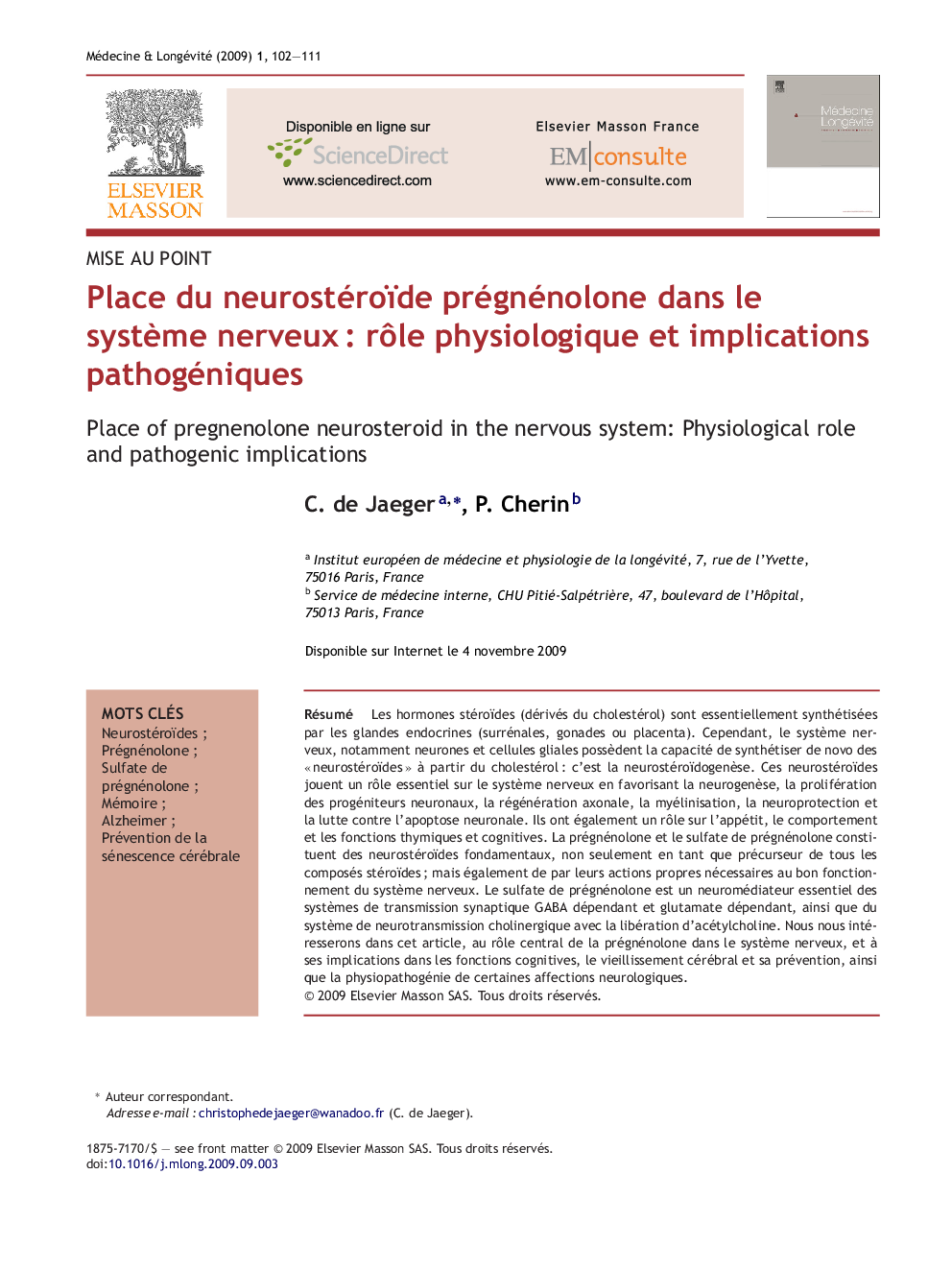| Article ID | Journal | Published Year | Pages | File Type |
|---|---|---|---|---|
| 1920192 | Médecine & Longévité | 2009 | 10 Pages |
Abstract
Steroids present in nervous tissues are originated from the endocrine glands (steroid hormones) and from local synthesis (neurosteroids). There is strong evidence that neurosteroids are also synthesized in human brain and peripheral nerves. There is little information concerning changes of steroid levels in the aging human brain. Neuroactive steroids synthesized in neuronal tissue, referred to as neurosteroids, are implicated in proliferation, differentiation, activity and survival of nerve cells. Neurosteroids are also involved in the control of a number of behavioral, neuroendocrine and metabolic processes such as regulation of food intake, locomotor activity, sexual activity, aggressiveness, anxiety, depression, body temperature and blood pressure. Pregnenolone and pregnenolone sulfate (PREGS), a major neurosteroid, has been shown to increase neuronal activity by inhibiting GABAergic and by stimulating glutamatergic neurotransmission. PREGS is also a potent modulator of sigma type 1 (Ï1) receptors. It has been proposed that these actions of PREGS underlie its neuropharmacological effects, and in particular its influence on memory processes and the development of neurodegenerative diseases. In this article, we summarize the current knowledge regarding the existence, neuroanatomical distribution and biological activity of these neurosteroids and especially pregnenolone, and its possible function in primary cerebral aging prevention.
Related Topics
Life Sciences
Biochemistry, Genetics and Molecular Biology
Ageing
Authors
C. de Jaeger, P. Cherin,
